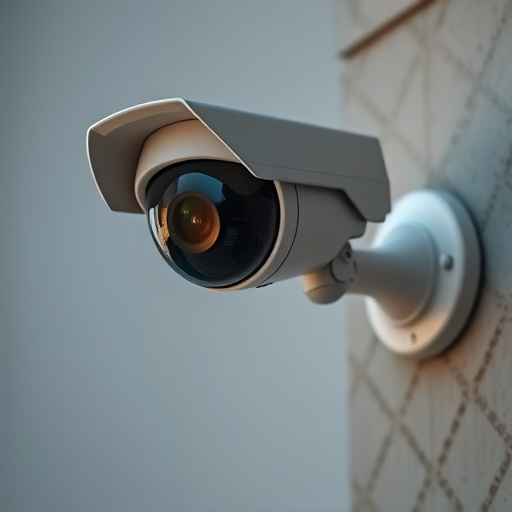Wireless dummy cameras with motion sensors have revolutionized home security with their discreet design and remote access via Bluetooth or Wi-Fi. Effective placement involves leveraging fake security camera placement angles for maximum deterrence, positioning them at entryways, windows, and common spots with good line-of-sight. These cameras act as powerful psychological deterrents and provide valuable footage if needed. Optimizing angles at 45-90 degrees towards main entry points, avoiding obstructions, and testing motion sensitivity enhances their effectiveness as both a visual deterrent and security tool.
Wireless dummy cameras with motion sensors are transforming home security. In this article, we’ll explore the technology behind these innovative devices, delving into their numerous advantages for safeguarding your property. From deterring intruders to enhancing peace of mind, these cameras offer a cost-effective solution. We’ll guide you through optimal placement angles, ensuring maximum effectiveness, and provide practical tips for installation, allowing you to leverage this game-changing technology to its full potential.
- Understanding Wireless Dummy Camera Technology
- Benefits of Using Motion Sensor Cameras for Home Security
- Choosing the Right Placement Angles for Maximum Effectiveness
- Installation Tips and Best Practices for Optimal Results
Understanding Wireless Dummy Camera Technology
Wireless dummy cameras with motion sensors have revolutionized home security by offering a discreet and flexible solution. These devices mimic the appearance of real security cameras, but lack the intricate wiring and connectivity concerns. They operate wirelessly, typically using Bluetooth or Wi-Fi, to transmit footage directly to your smartphone or computer. This not only simplifies installation but also allows for remote access and monitoring from anywhere.
Understanding the technology behind these cameras is key to effective placement. Fake security camera placement angles can significantly impact their deterrence value. Strategically positioning them in areas with good line-of-sight, such as entryways, windows, and common gathering spots, can act as a powerful psychological deterrent for potential intruders. Additionally, features like motion sensors ensure that the cameras only capture activity when it occurs, maximizing battery life and privacy.
Benefits of Using Motion Sensor Cameras for Home Security
Using wireless dummy cameras with motion sensors can significantly enhance home security. These devices serve as powerful deterrents against potential intruders, as their presence alone can make burglars think twice before attempting a break-in. By activating when any movement is detected, they provide 24/7 surveillance, allowing homeowners to rest easy knowing their property is protected.
The strategic placement of these fake security cameras is key to maximizing their effectiveness. Placement angles should consider areas prone to activity, such as entry points, windows, and dark corners. When positioned cleverly, they can act as visual deterrents while also providing valuable footage in the event of an actual security breach. This proactive approach to home security offers peace of mind and a strong first line of defense.
Choosing the Right Placement Angles for Maximum Effectiveness
When positioning wireless dummy cameras with motion sensors, the choice of placement angles is pivotal for optimal security. Aiming them at primary access points—such as entrances, windows, and doors—provides maximum coverage. A general rule is to position the camera’s field of view directly towards these areas, ensuring minimal blind spots. Additionally, mounting the cameras at eye level or slightly above can significantly enhance their effectiveness, mimicking real surveillance equipment.
The ideal angle also considers the environment. For exterior locations, a downward tilt might capture license plates and other details, while an upward angle can deter intruders from loitering in areas like rooftops. Adjusting these angles accordingly ensures that the dummy cameras not only look realistic but also serve their intended purpose of deterring potential threats effectively.
Installation Tips and Best Practices for Optimal Results
When installing wireless dummy cameras with motion sensors, strategic placement is key for optimal results. Position the camera at a height that offers a clear view of the area you wish to monitor, typically around eye level or slightly elevated. Aim it towards the main entry points, such as doors and windows, ensuring a wide field of view. Avoid placing them in areas where they might be easily obscured by furniture or natural obstructions, as this could compromise their effectiveness. The best placement angles are usually between 45 to 90 degrees, allowing for maximum coverage without capturing unwanted details outside the monitor’s scope.
In addition, consider the lighting conditions. Ensure the camera has adequate illumination to capture clear images, especially during low-light scenarios when motion sensors are most active. Natural light is ideal, but artificial lighting can also be used to enhance visibility. Keep the lens clean and free from obstructions like dust or debris for the best picture quality. Regularly test the motion sensor’s sensitivity to ensure it triggers appropriately without false alarms. By following these installation tips, you’ll maximize the benefits of your wireless dummy cameras, creating a more secure environment with a strong visual deterrent.
Wireless dummy cameras with motion sensors offer an effective and affordable way to enhance home security. By strategically placing these cameras at optimal Fake Security Camera Placement Angles, you can deter potential intruders and protect your property. When selecting a model, consider factors like sensor sensitivity, night vision capabilities, and weather resistance for maximum effectiveness. With proper installation following best practices, these cameras serve as a powerful visual deterrent, providing peace of mind in today’s digital era.
